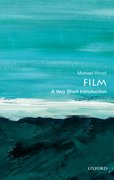Film is considered by some to be the most dominant art form of the twentieth century. It is many things, but it has become above all a means of telling stories through images and sounds. The stories are often offered to us as quite false, frankly and beautifully fantastic, and they are sometimes insistently said to be true. But they are stories in both cases, and there are very few films, even in avant-garde art, that don’t imply or quietly slip into narrative. This story element is important, and is closely connected with the simplest fact about moving pictures: they do move.
Even the older meanings of the word ‘film’ – a membrane, a covering, a veil, an emanation – now seem to have something to do with moving pictures. Many people believe films are an instrument of illusion, an emphatic way of seeing what is not there; and this capacity has been both celebrated and condemned. ‘Like a movie’ mostly means like some sort of fairy-tale. But what about the reverse proposition: that more than any other invention film brings us close to the world as it actually is? ‘Photography is truth,’ a character says in a film by Jean-Luc Godard, ‘And cinema is the truth twenty-four times per second.’
In this short video, Michael Wood sets the scene by explaining what first made him fall in love with film:
Here, Michael muses on the mysterious and magical creation of movement in film, and embraces the filmic possibilities afforded by new technologies.
Finally, Michael explores the different ways in which we can view films and how this has altered our experience of creating – and watching – them.



Recent Comments
There are currently no comments.